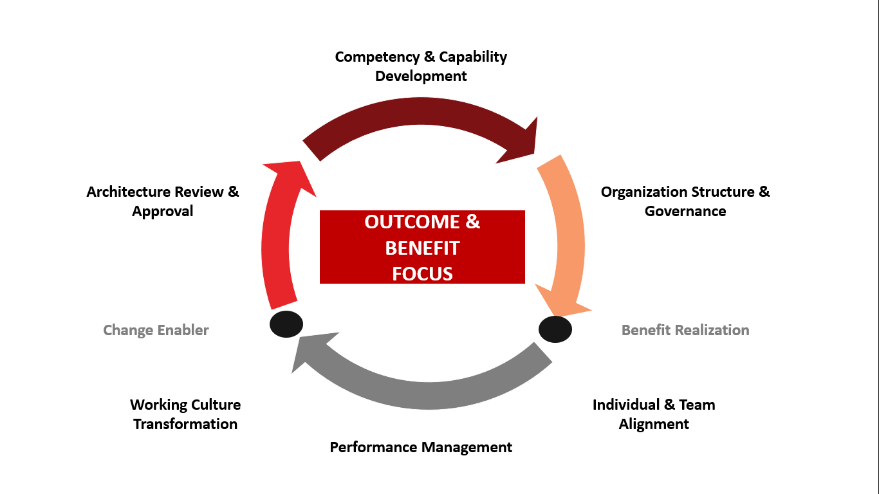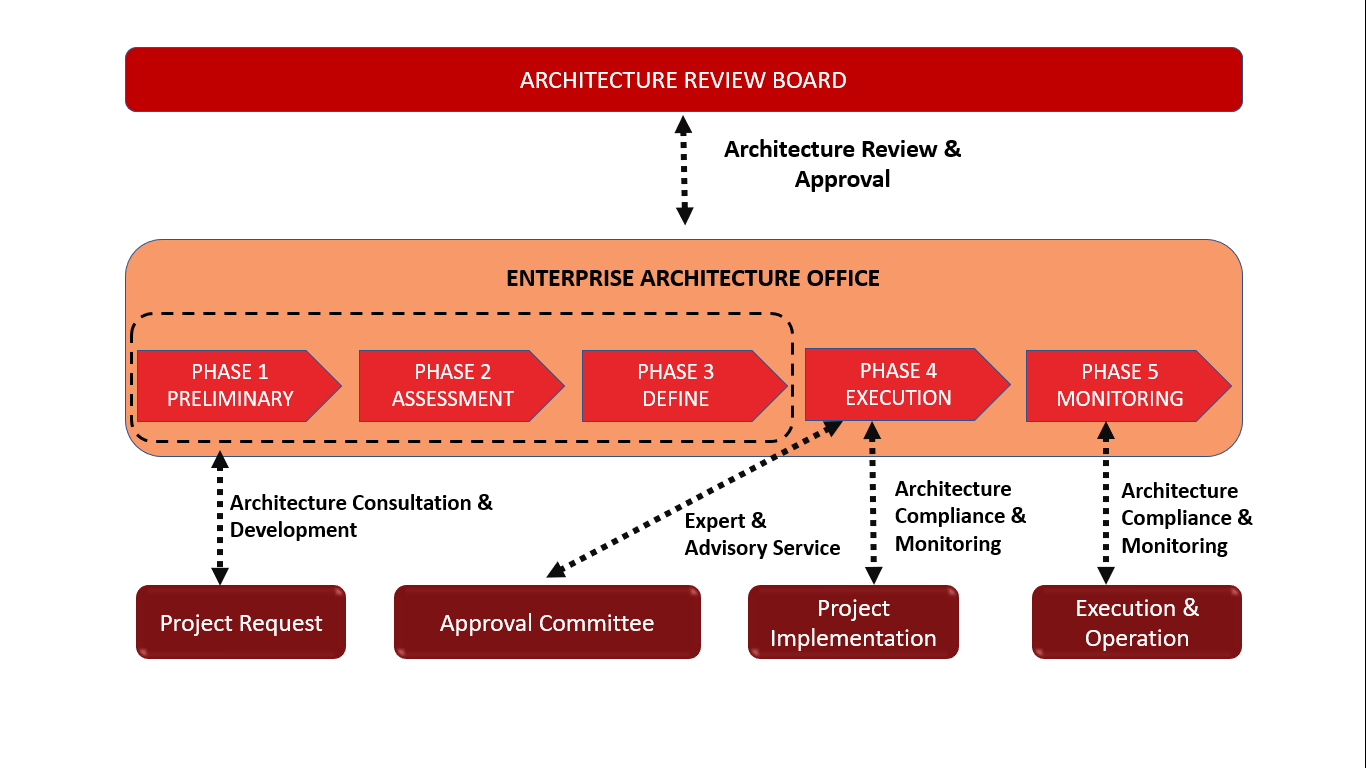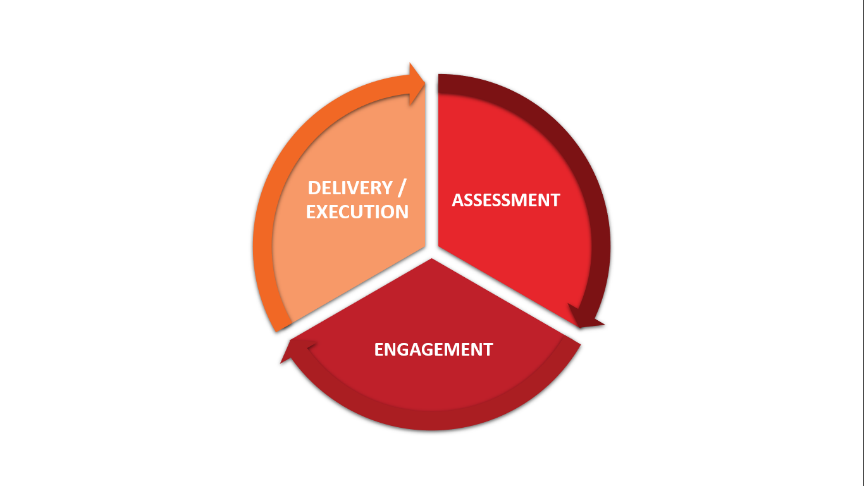Cultural Changes towards a Digital Savvy Workforce for Enterprise Architecture Implementation
By Aaron Tan Dani
Rapid digital technologies changes are transforming workspaces. From automation and artificial intelligence (AI) to robots, digital technologies are creating a workforce of digital workers and transforming the work environment. New ways of working and agile talent are needed in order for organisations to grow and quickly adapt to the fast-moving digital environment including the implementation of Enterprise Architecture. Organisations should take few components into consideration before creating a digital savvy workforce for digital transformation. In the process of developing a digital-savvy workforce there are three (3) main areas that organisations should focus on:
- Cultural changes in people’s mindsets to embrace the digital environment;
- Communication and engagement model that utilise the right digital technology;
- Identifying the organisation’s values by adopting innovative ways of working, preparing and enabling the workforce with the right digital tools and appropriate governance

To address the cultural changes required for a mindset change in response to developing a digitally savvy workforce, organisations should develop a cultural change framework which demonstrates in general the areas of engagement.
Figure 1: Conceptual Framework for Cultural Change
Communication and Engagement
For effective communication and engagement, it is important to determine the changes that need to be made in the management practices in enhancing business capabilities through the Enterprise Architecture approach. Changes involve delivering the right messages and getting support and resources from the stakeholders, higher managements that work closely with the EA department. To ensure strategic and operational needs are taken into account in the EA implementation, it requires a two-way communication process with close engagement with the stakeholders.
Organisation Structure and Governance

To strengthen the EA practice, organisations should enhance its EA organisation structure and governance which highlights the three (3) main components involved:
- Enterprise Architecture Office
- Architecture Review Board
- High level EA development process
Figure 2: Proposed EA Operating Model
Performance Management
Innovative ways of working using appropriate technologies can ensure a successful Performance Management that can enhance collaboration between the stakeholders, EAO and the involved teams in an organisation. Performance Management should be enabled with these following considerations:
- A relevant implementation and communication plan on the adoption of information and collaboration tools;
- Collaboration capability for shareholder’s strategy, decision making and operational requirements;
- Perform customization of the tool’s capability and metamodels relevant to organisation’s need and environment;
- Identify specific talents and personnel to drive the implementation and culture; and
- Skills and understanding of these tools as a critical platform for operational change management activity.
Working Culture Transformation

A systematic, process-oriented approach to organisational change management which will help realise the Working Culture Transformation to enhance collaboration between organisation’s top leadership and Human Resource office in implementing technology change and business processes through the following process:
Figure 3: Change Management Approach
- Assessment – The findings of this assessment will shape the strategy of implementing the governance and communication activities to be undertaken. This will have an impact on the outcome at the EA implementation stage.
- Engagement - This strategy of engagement will be based on the results of the evaluation performed at the assessment stage. A communication plan will be developed to assist with the day-to-day EA operational activities.
- Delivery/Execution –This strategy will focus on helping and ensuring that the employees are equipped with the right skills and tools to ensure that the goals of the change management will be successful.
- Communication and Awareness – The foundation which involves the ability of being aware and communicating the cultural values, practice and perceptions through a campaign strategy that will employ a variety of different communication approaches and techniques to ensure key messages are received and understood by a diverse audience in the organisation.
Establishing a digital savvy workforce will eventually create a better experience not just for the implementation of digital transformation, but also for the business operations in general. Organisations should find the right balance between the right technologies and working processes for a more desirable and effective workforce.
Author: Aaron Tan Dani
President of Singapore Computer Society EA-Chapter
[email protected]
Founder and Chairman of Iasa Asia Pacific
[email protected]
Chief Architect of ATD Solution
[email protected]
Related websites:
- Computer Society EA-Chapter: http://www.scs.org.sg/Chapter/ea-homepage
Join the EA activities in Singapore and learn how you can implement Digital-Business-driven EA in your organisation.
- IASA: www.iasaglobal.org
Learn more about ITABoK (IT Architecture Body of Knowledge) skillsets and about the roles, scopes and impacts of EA Specializations.
- ATD Solution: www.atdsolution.com
Acquire successful Digital Transformation adoption with ATD Enterprise Architecture consulting and training services.